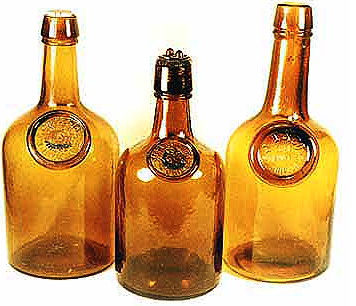The Next Part of the Story
The Vesta
Part Two
When we left the Vesta, she was loading cargo for the voyage to Fort Fisher, near Wilmington. Among the items on board was a large shipment of military goods, shoes, books, beer and three cases of whiskey. Typically about 70% of blockade runners’ cargo was military supplies including rifles, ammunition making materials, cloth for uniforms, etc. The remaining space was taken with other goods in demand during wartime scarcity.
In addition to the captain, officers and crew, there were several passengers. Among them were Mr. Perrin, Lt. J.H. Gardner, Dr. William Shepherdson, and Paymaster Moses all of the Confederate States Navy. Two civilians, Mr. T.J. Leed of England and Mr. Kirlebane of Bermuda were also on board. Surprisingly enough, the remaining passengers were women: Mrs. John Mitchell and her daughters Minnie and Isabel. Records give no indication of their ages or home place but one might surmise that they were returning to the South via Bermuda after a visit to England.
On January 3, 1864 the Vesta left the port of Bermuda and headed for the open sea and the eventual safety of Fort Fisher. In theory, the trip could be made in about sixty hours under ideal conditions. However that was not to be the experience of the Vesta. According to the Richmond Examiner (Jan. 20, 1864) a Confederate officer on board the Vesta wrote that “For seven days she was chased over the seas by a number of Yankee cruisers, but succeeded in eluding them.” This must have been a harrowing experience, but more adventures awaited the crew and passengers.
On January 10 the coast near Wilmington was in sight. Blockade runners usually tried to enter Fort Fisher under cover of darkness to avoid blockading ships. Since they were so close to land and it was still daylight, the ship was “compelled to lay to.” This meant that the ship was turned into the wind and stopped running forward. Remember that the Vesta was a coal burning vessel, producing black smoke clouds easily visible to blockaders from a distance. Laying to would reduce the amount of coal being burned.
Despite these precautions, the Vesta was spotted by a Yankee cruiser which gave chase. In a short time eleven more vessels joined the chase.
The Vesta, although apparently surrounded, ran the gauntlet in splendid style, through one of the most stirring scenes which the war has yet witnessed on the water. Some of the cruisers attempted to cross her bows and cut her off, but she was too rapid for this manoeuvre, and at half a mile’s distance some of the cruisers opened their broadsides at her, while five others in chase were constantly using their bow guns, exploding shells right over the decks…Fortunately no one was hurt, and the vessel ran the gauntlet, raising her flag in defiance…
Her innovative twin screws and powerful engine had allowed the Vesta to escape unscathed and as nightfall approached, the chase ended. Sadly, that was not the end of the ship’s troubles.
Delighted by their triumphant escape, the captain, pilot and first officer celebrated by getting into the whiskey stores and eventually became “outrageously drunk.” While they lay sleeping or passed out on the deck, the second officer steered the ship, essentially functioning as a designated driver. Around 2:00 a.m., the second officer woke the captain who then woke the pilot. Their versions of the following events differ, but both accused the other of claiming to know exactly where they were, to wit, ten miles north of Fort Fisher. The captain ordered the pilot to “take her in”. Fifteen minutes later, they were heading through the breakers and ran aground on a sand bar. Unfortunately they were not at Fort Fisher.
The crew reversed the engines and worked for several hours but try as they might, the ship could not be moved. Determined not to let the ship fall into Union hands, the captain ordered the women and some of their baggage to be taken ashore in a life boat. Later the other passengers were taken ashore along with most of the crew. Just before sunrise the captain set the ship on fire. There was no way to transport the cargo so it burned along with the ship. The vital military supplies, household goods, books, and a ceremonial uniform for General Lee were all destroyed by the flames.
Next time: What happened to the passengers and crew? Where is the Vesta now?
To read the final chapter of the Vesta story, click here.
